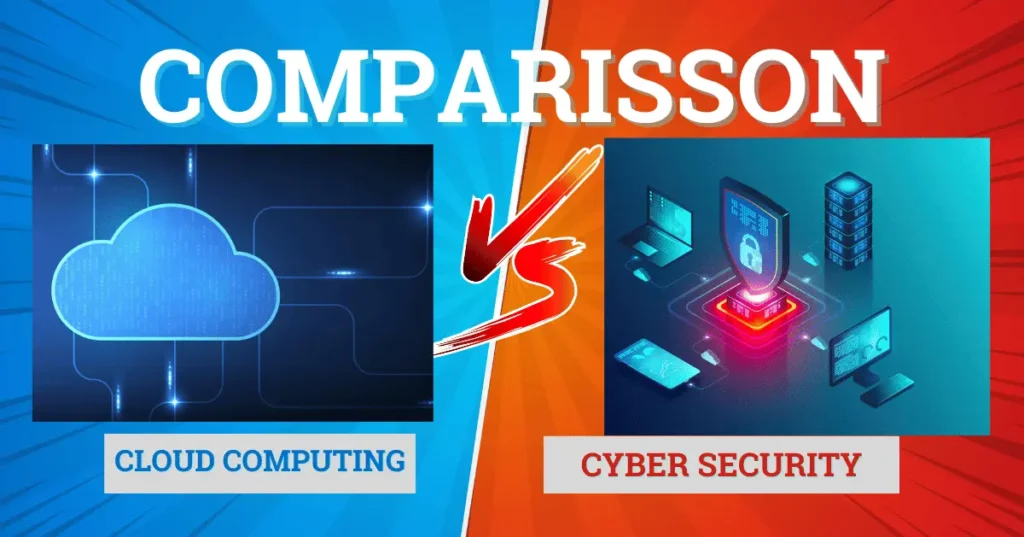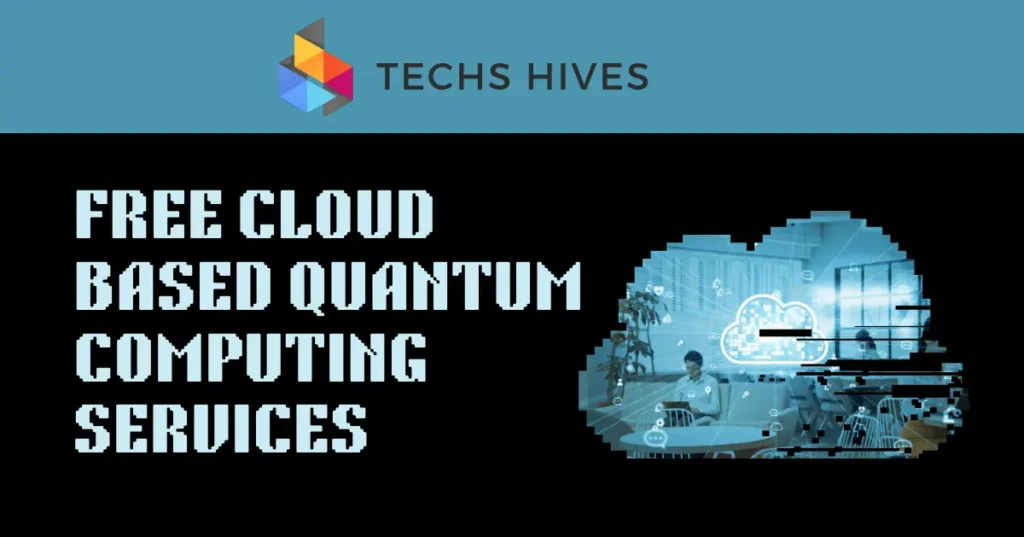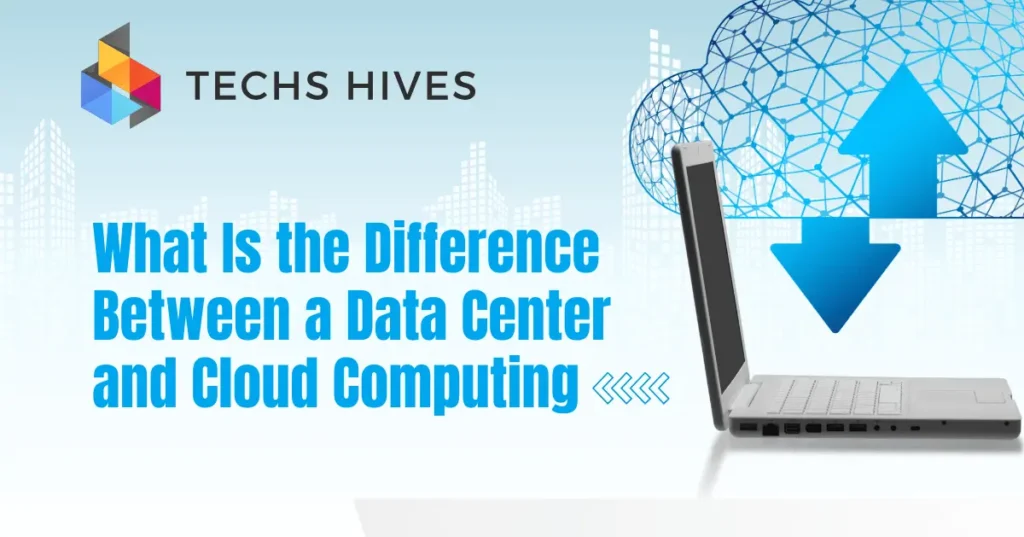Cloud computing is a technology that allows you to store, manage, and process data over the internet instead of on your computer. It makes sharing files and using applications easy from anywhere. It also helps businesses save costs on hardware and gives them flexibility in scaling their resources.
Cyber security, on the other hand, is about protecting information from threats. It involves techniques to secure computers, networks, and data from attacks. Cyber security is essential because more data is stored online, making it a target for hackers. While cloud computing offers convenience, cyber security ensures that this convenience doesn’t compromise safety.
Table of Contents
Cloud Computing
Cloud computing is a technology that allows people to access, store, and manage data over the internet. Instead of saving files on a computer or local storage, data is kept on remote servers, known as the “cloud.” This means you can access your files from anywhere, as long as you have an internet connection. This convenience is especially useful for businesses and people who need to work from different locations.
One of the main advantages of cloud computing is the cost savings. Users don’t need to invest in expensive hardware or maintain physical storage systems. You pay only for the services you use, which makes it more affordable for businesses to manage their IT needs. The flexibility offered by cloud services allows companies to scale their storage and computing power up or down based on their requirements.
Cloud computing also makes collaboration easier. Since data and applications are stored online, multiple users can access and work on the same information at the same time. This helps teams work more efficiently, even when they’re in different places.
Cyber Security
Cyber security is the practice of protecting computers, networks, and data from unauthorized access or attacks. As more of our activities move online, keeping personal and business information safe has become essential. Cyber security involves tools, techniques, and policies to defend against cyber threats like hacking, viruses, and data theft.
One of the key elements of cyber security is safeguarding sensitive information. This includes passwords, personal data, and financial details. Cyber security helps ensure that this information doesn’t fall into the wrong hands. It also plays a crucial role in maintaining the integrity of systems, ensuring that data remains accurate and unaltered.
Another aspect of cyber security is preventing disruptions. Cyber attacks can cause significant problems, from stopping a website from working to compromising a business’s operations. By investing in good security practices, both individuals and organizations can reduce risks.
You can also read the difference between the cloud computing and virtualization.
Comparison of Cloud Computing and Cyber Security
This table mentions the differences and similarities between cloud computing and cyber security, making understanding their roles and importance easier.
| Aspect | Cloud Computing | Cyber Security |
| Purpose | Provides online storage, processing, and access to data and applications over the internet. | Protects data, networks, and systems from unauthorized access, breaches, and various cyber threats. |
| Function | Enables scalability, remote data storage, and easy access to resources on demand, making it convenient for users and businesses. | Ensures privacy, confidentiality, integrity, and availability of information to prevent data loss or misuse. |
| Main Focus | Convenience, efficiency, and flexible resource management. Users can scale up or down as needed and collaborate from anywhere. | Security, risk management, and safeguarding assets. Focuses on preventing attacks, mitigating risks, and maintaining data integrity. |
| Benefits | Cost-effective, offers easy collaboration across teams, and allows businesses to save on hardware expenses. Promotes productivity and efficiency. | Ensures sensitive information stays protected, minimizes risks of breaches, and helps prevent unauthorized access. Builds user trust and confidence in data safety. |
| Challenges | Dependent on internet connectivity, can face latency issues, and comes with concerns over data privacy. Users need to ensure compliance with data regulations. | Requires continuous updates, strong defense mechanisms, and user awareness to counter evolving threats. Cyber threats are constantly changing, which makes security management challenging. |
| Overlap | Cloud computing heavily depends on cyber security to ensure safe storage and data handling. Without security, data stored in the cloud is vulnerable to attacks. | Protects cloud environments through encryption, identity management, and monitoring. Ensures that users can utilize cloud computing services safely and securely. |
How Cloud Computing Impacts Cyber Security
1. Data Storage and Accessibility Challenges
Cloud computing shifts data storage from local systems to remote servers, raising security concerns. Sensitive information must be protected during storage and transmission over the internet. This requires robust security protocols to safeguard data across various access points. Proper authentication and authorization are essential to prevent unauthorized access.
2. Increased Risk of Cyber Attacks
Cloud environments are attractive targets for hackers due to the vast amounts of valuable data stored. Organizations face risks such as data breaches and ransomware attacks. To combat these threats, strong encryption, multi-factor authentication, and regular security audits are essential. Continuous monitoring helps detect unusual activities and respond to potential breaches swiftly.
3. Complexity of Security Practices
Implementing effective cloud security involves multiple layers of protection, adding complexity. Organizations must ensure collaboration between cloud service providers and internal teams. Clear roles and responsibilities for security management are necessary, along with defined data access policies. Regular assessments and updates to security protocols help address evolving threats.
4. Data Privacy and Compliance
Cloud computing impacts how organizations manage data privacy and comply with regulations. Companies must adhere to data protection laws, even with offsite storage. This includes ensuring cloud providers implement adequate security measures. Regular audits help verify compliance standards, fostering strong partnerships with providers to enhance data privacy efforts.
Importance of Cyber Security in Cloud Computing
Protecting Sensitive Data
Cyber security is crucial in cloud computing because it safeguards sensitive data stored in cloud environments. Organizations often store personal information, financial records, and proprietary business data in the cloud. Strong security measures help prevent unauthorized access, data breaches, and data loss, ensuring that confidential information remains protected.
Ensuring Business Continuity
Robust cyber security practices are essential for ensuring business continuity in the event of a cyber attack. A security breach can disrupt operations, leading to significant financial losses and damage to a company’s reputation. By implementing effective security protocols, businesses can minimize downtime and recover quickly from incidents, ensuring ongoing access to critical data and services.
Compliance with Regulations
Organizations using cloud services must comply with various data protection regulations, such as GDPR or HIPAA. Cyber security helps ensure that companies meet these legal requirements, protecting both the organization and its customers. Compliance not only avoids potential fines and legal issues but also builds trust with customers who expect their data to be handled securely.
Building Customer Trust
Cyber security is vital for building and maintaining customer trust. Users are more likely to engage with businesses that prioritize the protection of their data. Companies can reassure customers that their information is safe by demonstrating a commitment to strong security practices. This trust is essential for fostering long-term relationships and maintaining a positive brand reputation in the competitive market.
FAQs
1. What are common cloud service models?
The three main cloud service models are Infrastructure as a Service (IaaS), Platform as a Service (PaaS), and Software as a Service (SaaS). IaaS provides virtual resources, PaaS offers a development platform, and SaaS delivers software online.
2. How can businesses choose a cloud provider?
Businesses should consider security features, compliance, reliability, customer support, and cost when choosing a cloud provider. Checking the provider’s reputation and user reviews is also important.
3. What are some common cyber security threats in cloud environments?
Common threats include data breaches, phishing attacks, ransomware, and insider threats. These can exploit vulnerabilities if security measures are lacking.
4. How can users enhance their cyber security in the cloud?
Users can enhance cyber security by using strong passwords, enabling multi-factor authentication, updating software regularly, and being cautious of phishing attempts.
5. What role do cloud security certifications play?
Cloud security certifications, like CCSP or ISO/IEC 27001, show that a provider meets specific security standards. They help businesses evaluate the security of cloud providers.
Conclusion
Cloud computing and cyber security are two essential aspects of the digital world that work together. Cloud computing offers flexibility and convenience by allowing users to store and access data online. However, this accessibility comes with risks, making cyber security crucial. Protecting sensitive data and ensuring secure access is vital for individuals and businesses using cloud services.
The relationship between cloud computing and cyber security is important for maintaining data integrity and privacy. Organizations must implement strong security measures and stay updated on emerging threats. By doing so, they can benefit from the advantages of cloud computing while minimizing potential risks.



